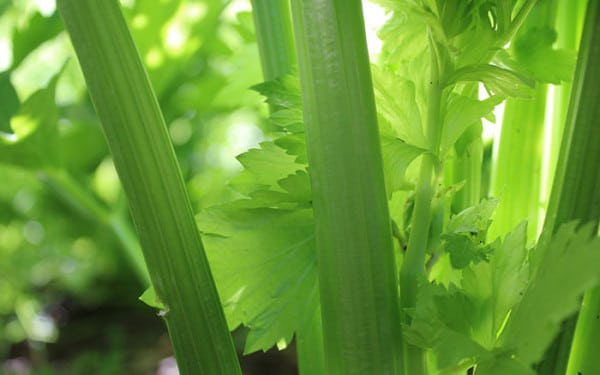There’s always division when it comes to celery. Some people love the crunchy veg, but some think that the stringy texture and peppery flavour is unpalatable. Nevertheless, celery is a fantastic crop to grow in the grow-your-own area.
Celebrating celery
With its peppery flavour and loud crunch when eaten raw, celery is a low-calorie snack option that is good for overall health with the nutrients on offer, and is a popular crop to grow in gardens.
Celery is a biennial plant – meaning it produces flowers and seeds only during the second year. However, it’s grown as an annual for the stalks which are eaten raw, or as an ingredient in salads, or even as a flavouring in soups and stews.
It’s also a key ingredient of ketchup, and it can also be made into salt. Celery salt has a peppery flavour to it and some connoisseurs would say a green grassy flavour too.
It’s thought that the first cultivation of celery was in the Mediterranean, but archaeological remains have shown that celery seeds were being transported as early as 4,000 BC.
Celery seeds can be sown between March and April, either in in seed trays or pots filled with peat-free all-purpose compost. You can sow the seeds directly into the ground, but it’s ideal to start them off in trays and transplant the seedlings when they’re large enough.
Come May and June, the seedlings should be big enough to handle and can be planted out.
Celery is a marshland plant, so they’re moisture-loving and require a rich, moisture-retentive soil preferably in sunny spot. Bear in mind that you don’t want the soil to dry out.

Planting celery
When planting, dig a trench for the seedlings that’s between 40-50cm wide and 30cm in depth. Dig in plenty of organic matter like homemade compost and a fertiliser that’s high in potassium to give the crops a great head start. Then, the plants can be put in place with 23cm between each one.
Once the stems have reached 30cm tall, mound the soil up by 8cm, keeping the top exposed which will help the stems to become blanched. Blanching is a technique that we use in horticulture particularly when grow veg. You want to prevent photosynthesis to ensure the vegetables have a more delicate flavour and texture. Alongside celery you can also use this technique for asparagus, cabbage, lettuce, and rhubarb.
However, there are self-blanching types of celery that have been developed such as Tango F1 and Loretta. These don’t need to be earthed up, but can be planted at ground level and left to self-blanch with their own foliage doing the trick. ‘Celebrity’ is a popular variety of this type which has short stalks, with a lovely flavour, perfect as a picnic snack.

Caring for celery
The key to growing great celery is to ensure the plants get lots of water throughout spring and summer. If there’s due to be prolonged dry spells, ensure the celery has been given plenty of water regularly beforehand.
Feeding with a high-nitrogen fertiliser when the crops are established, will deliver a better harvest too.
Keep an eye out
The most common pests that you’ll come across when growing celery are slugs and snails. So, when you see these slimy creatures, pick them off by hand or use chopsticks to remove them from the area. Encourage hedgehogs into your garden with a hedgehog house for shelter and provide them with some hedgehog, cat or dog food to supplement their diet because they will eat slugs too.

Harvesting celery
The hearts and stems tend to be ready for harvesting between August and October when they are the desired height. Get hold of a sharp, clean knife and cut the celery at the base of the plant.


Leave A Comment